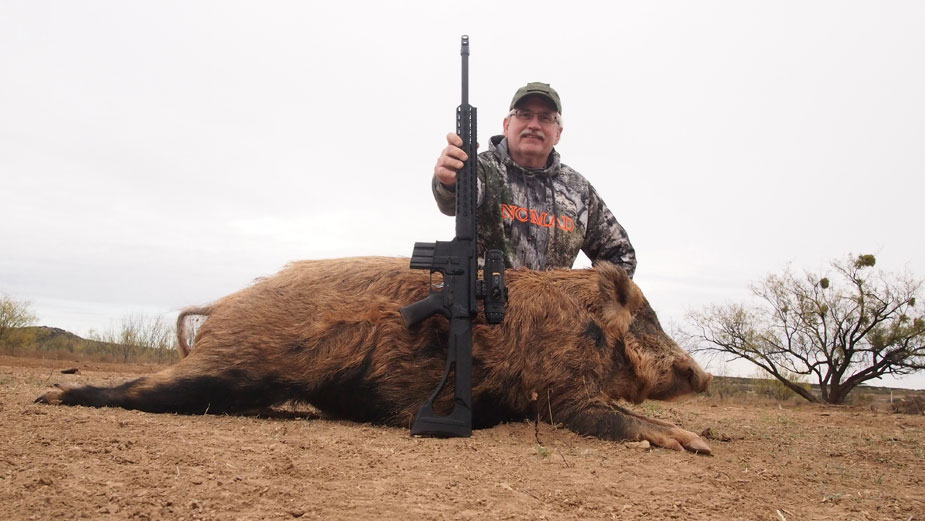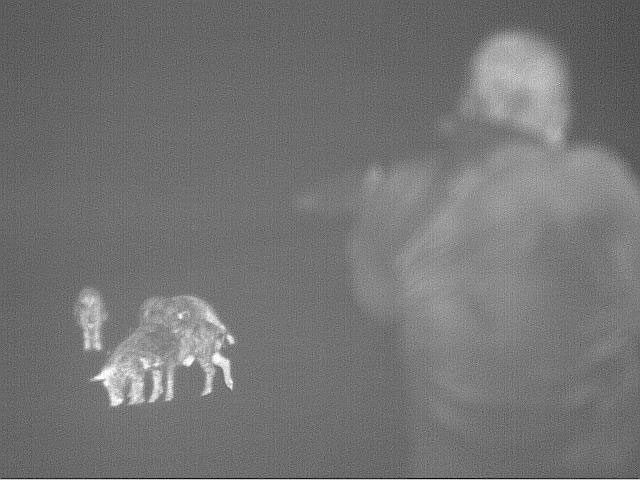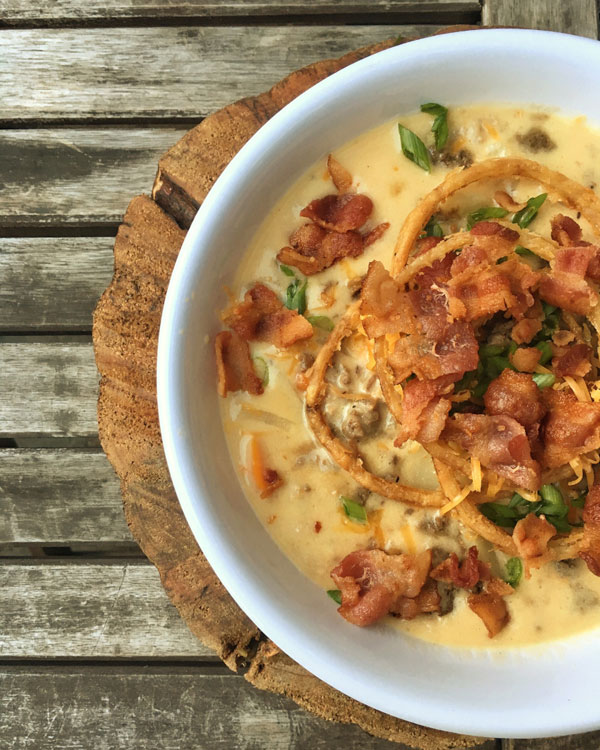Brian McCombie

We crept along the West Texas ranch road in the dark, sometime after 11 p.m., my guide Dusty at the wheel, me riding shotgun. Well, not exactly “shotgun.” More like sitting in the passenger seat with a 450 Bushmaster AR pointing out the window, looking for wild hogs through my Trijicon thermal scope.
We’d been out since 9 p.m. and hadn’t spotted a single hog. I was hunting the Spike Box Ranch, near Benjamin, Texas, in early December 2017. The Spike Box is a 90,000-acre working cattle and agricultural operation, with some of the best wild pig hunting I’ve experienced.
On past Spike Box hunts, I’d set up in blinds and wait far into the night for hogs to show up at feeders and watering holes. And it was usually successful. But a major cold front had moved through this area of Texas, the night temps were in the low 30s, and that meant hogs would be moving.
So, we opted for the mobile approach that night, cruising along the edges of huge pastures with only the truck’s driving lights on, stopping here and there to spotlight the brush and the winter wheat fields, and to let me scan into the night with my REAP-IR thermal scope.
We’d just gotten to the edge of a winter wheat field, when Dusty snapped on the spotlight and immediately said, “Hog!”
“Stop the truck,” I said.
Dusty hit the brakes and the truck swung to a halt. I bailed out the passenger door and Dusty cut off the spotlight. I trotted to the back of the truck and, using the side of the truck bed as a rest, set up my rifle and looked through my thermal scope.
The wheat field dipped away from the ranch road and then rose up in a series of small ridges. My Trijicon REAP-IR thermal scope was set on white hot, and the hog was just coming out of the dip in the field and heading upslope when I got on him. A big hog, too, a boar. He’d heard the truck, and the spotlight had scared him and he was going to be up and over those ridges soon. But all I had was a shot at his rear end, and I wasn’t about to take that.
I kept the scope’s reticle on the hog as he weaved his way up the incline, breathing hard, telling myself to be ready for that split-second opportunity.
The boar slowed his trot. Dusty had cut the engine and, with no lights on him, the boar was starting to get curious. “What was going on?,” the boar’s slowing steps seemed to say, his head swinging back in the direction he’d just come. The hog got to the last small ridgeline before the top of the hill, stopped and turned broadside, looking towards the truck.
I fired.
In the white-hot light on the scope, I watched the boar drop right over like the ground had been pulled away from him. Thump! The 260-grain Remington AccuTip bullet drilled him hard. He kicked a couple times and then went still. I moved to Dusty’s window, told him the hog was down.
“Yeah, I heard it hit,” Dusty said. “Ka-Whomp! Man, that gun’s a sledgehammer!”
It is. The new 450 Bushmaster Rifle is not a long-range firearm, but within 150 yards it packs a major punch, especially with the new Remington Accu-Tip rounds.
But what made the hunting possible that night was the REAP-IR thermal scope, introduced last year by Trijicon. Light and compact, the REAP-IR lets you spot human-sized objects out to 1,200 yards in the darkest of nights. The REAP-IR uses thermal technology to detect heat. For the hunter, this means the thermal will spot any object warmer than the surrounding air—like a hog standing a couple hundred yards away.
The REAP-IR also has multiple reticle options. You can choose among different color patterns: red for heat, for example, or white to white-hot, among other options. The scope also has various setting for brightness and image clarity, plus can zoom up to an 8x magnification.
While thermal optics are generally not legal for hunting game animals, most states do allow you to hunt hogs, coyotes and similar varmints with thermal and night vision optics.

Dusty and I chased more hogs that night, including a sounder of a dozen we spooked and ran a few hundred yards away, only to stop and continue their feeding. I jumped out of the truck and put a stalk on them in the dark, trying not to trip over the uneven and hard-packed earth. But I’d get almost close enough and they’d drift away. After 30 minutes of this, I finally did get one into range. Shot. And missed. The hogs ran off.
An hour later, I was thinking about the bed at my hunting cabin and how I had to wake up at 5 a.m. for tomorrow’s deer hunting, when I spotted a white blob in the distance to the right of the truck. Dusty killed the engine and we coasted forward down the ranch road, eased to a stop. The blob came into focus and it was a hog, smaller than my first but still good-sized.
I opened the passenger door as quietly as I could. The roadway, I figured, was going to be the easiest and most silent way to get close. The hog was moving now, but at an angle that would have him intersecting the roadway in a hundred yards or so. I had the wind in my face, so I wasn’t worried about getting busted by my scent. So I hustled down the road, the hogs moving up and to my right.
I stopped and dropped to one knee, caught my breath and got the REAP-IR onto the hog. He was still heading for the road, unaware of my presence. I used my right knee for a brace, and slid the rifle’s safety to “FIRE.” The hog got near the road, disappeared for a second into a low spot, and then was on the road itself, nose down, sniffing.
I lined up the reticle of the REAP-IR’s on the hog’s low shoulder and fired. Down went Hog number two!
The truck’s headlights went on and Dusty drove up to my position. We loaded the hog in the bed of the pickup next to my first hog, and headed back to the hunting camp. It was nearly 1 a.m., and I was going to get less than four hours sleep before I had to get up and try my luck at a West Texas whitetail.
I was tired and cold, and my right knee ached from a stumble I’d made while stalking that one sounder. But we’d also spotted a fair number of hogs, and were returning to camp with two boars. All in all, one great night of hunting.



























